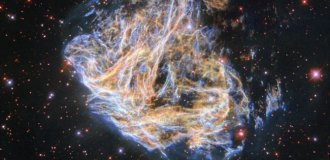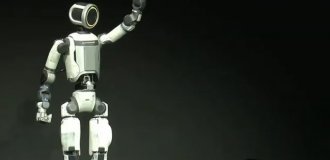Real photographs of the surfaces of the planets of the solar system (32 photos)
What are the landscapes of Venus and Mars like? What do giant hexagons look like on the surface of Saturn and anticyclonic storms on Jupiter?

Mercury and its surface
These images of the planet were obtained by the Messenger spacecraft in 2011.

In the center of the photo is a 90-kilometer unnamed crater.

This is what the surface of the planet looks like inside the Caloris Basin.

One of the impact basins.

The surface of Mercury has undergone a frantic cosmic bombardment. Most of the planet is dotted with craters of various sizes.
There are also rocks and plains on the planet. The height of some rocks reaches 2 km.
The plains were created by lava flows.

Photographs of the surface of Venus taken by the Soviet spacecraft "Venera - 13" and "Venera - 14"

The photographs were taken in 1982

Venus has very difficult conditions: high temperatures and acidic clouds that damage the most reliable equipment.




Venus has large plains that were created by lava flows in the past. These plains cover about 80% of the entire surface of the planet. There are also numerous different formations.

Surface of Mars
The surface of this planet is one of the most studied in our solar system (with the exception of the earth's surface). You can see the dunes in the photo.

Collapsed lava tubes in the Tharsis region

The planet's surface is mostly basalt, covered with a thin layer of iron oxide.


There were some pretty interesting posts on the Chips about the surface of Mars
Some amazing photos of Mars



Jupiter

The Great Red Spot is an anticyclonic storm that has not subsided for several centuries

If Jupiter were 80 times larger, then this planet would “light up” and become another star. It's all about the mass. But even now the planet generates heat due to gravitational compression.

Saturn

Vortex in Saturn's northern hemisphere
The image was taken at a distance of approximately 419,000 km from Saturn

One of the images taken by the Cassini spacecraft

Giant hexagon at Saturn's north pole


The famous rings of Saturn close up

Uranus
The image was taken by the Voyager 2 spacecraft.

Ariel against the background of the planet's cloud layer
The planet's atmosphere consists of 83% hydrogen, 15% helium and 2.5% methane.

Neptune
This is what clouds look like on Neptune

Voyager 2 managed to capture Neptune for the first time near 1989

The picture was taken from a distance of 4,950 km from the planet
Neptune's atmosphere is similar to the planets Jupiter and Saturn, consisting mainly of hydrogen and helium.






















